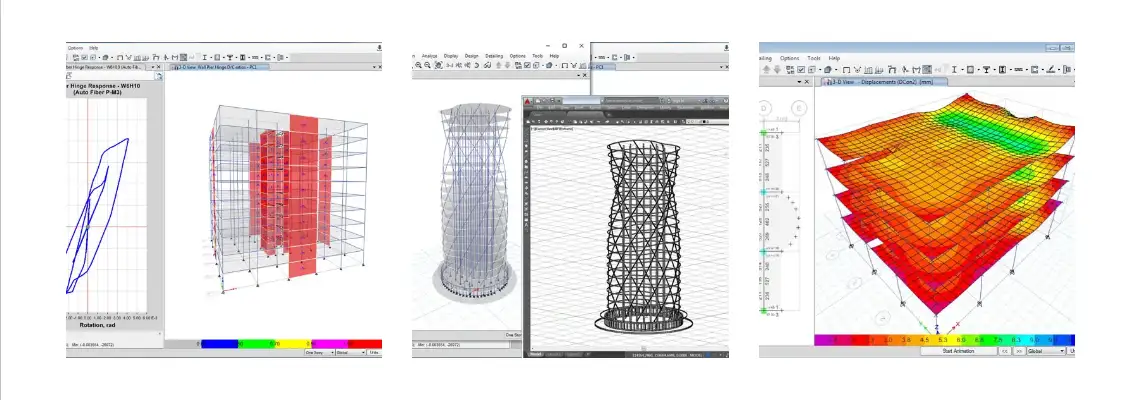
ETABS and SAFE - Structure Analysis and Design Software from CSI
ETABS Fundamentals
By the end of the CSI-ETABS course, students will comprehensively understand the ETABS software and its application in structural engineering. They will learn the basics of the finite element method (FEM), including line and area elements, element forces and stresses, and meshing of FE elements. In addition, they will learn to create ETABS models using workflows such as setting up units, grids, stories, reference planes, lines, drawing walls, columns, beams, and slabs, assigning loadings, and performing analysis, designing, and RC detailing.
We will review how to model frame, floor, and wall systems using techniques such as the section designer section, non-prismatic section, frame end releases, panel zone for shear deformation, and stiffness modifier. And then, we will discuss rigid and semi-rigid diaphragms and pier design.
Seismic and wind analysis and how to analyze wind loading according to ASCE and UBC are also covered. Furthermore, we will explain the RC element design for the pier and column design. Finally, participants will learn to report their results using print/display tables for tabular output and print graphics for graphical output. Overall, the course aims to equip students with the skills to apply ETABS software to real-world structural engineering problems.
ETABS Advanced
By the end of the CSI-ETABS Advanced course, students will have an advanced understanding of the ETABS software and its application in structural engineering. Students will learn about dynamic analysis, including the code conditions and limitations according to ASCE. They will also gain an in-depth understanding of the modeling of different lateral load resisting systems in ETABS and how to apply dynamic analysis for shear walls and dual systems.
We will review the design and detailing of different lateral load-resisting systems and P-delta analysis for slender columns. In addition, we will cover thermal load analysis for slabs. By the end of the course, students will be able to model and analyze complex structural systems using ETABS, including those with advanced lateral load-resisting systems.
SAFE - Analysis and Design of Floor Systems
By the end of the CSI-SAFE course, students will comprehensively understand the SAFE software and its application in structural engineering. The course will focus on modeling, analyzing, and detailing various concrete structural elements, including flat slabs, solid slabs, ribbed slabs, single and strip footings, raft foundations, piles, and pile caps.
We will explain how to apply ACI code requirements for each structure, check punching shear for flat slabs, check deflection according to code, and provide solutions for high-deflection problems for all slabs. In addition, we will cover load combinations for the design procedure of slabs and foundations, as well as load combinations for soil-bearing capacity checks for foundations.
The course aims to equip participants with the skills to efficiently model, analyze, and design various concrete structures using the SAFE software while adhering to the ACI code requirements. They will be able to use SAFE to solve real-world structural engineering problems related to concrete structures and to provide appropriate solutions for issues such as punching shear, high deflection, and soil-bearing capacity checks.

